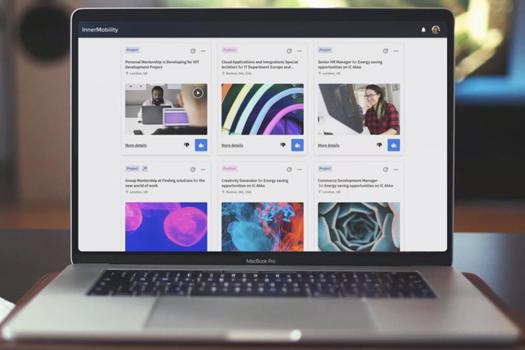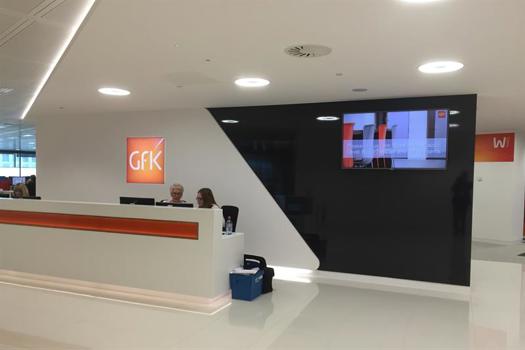The organisation
A decade ago British-based multinational telecoms giant Vodafone was infamously known as the business that issued one of the biggest pre-tax losses in corporate history (£13.5 billon, or £37 million per day). The past 12 months haven’t exactly been easy either. Last Autumn it reported a €7.8 billion loss for the first half of the 2019 financial year due to the merger of Vodafone India with Idea Cellular. Meanwhile Q3 revenues fell £0.8 billion after adopting the new International Financial Reporting Standard IFRS 15.
Having grown to become the world’s fourth largest telco by number of mobile customers (it operates networks in 25 countries, has partner networks in a further 47 and has 100,000-plus staff worldwide), Vodafone’s internal story is ever-changing. Recently, for example, it announced it would extend its existing network-sharing agreement with Telefónica O2 in the UK to include 5G services.
The challenge
“We’re a communications-based business, but what we were increasingly finding was that making connections and increasing engagement with our own people could be significantly improved,” recalls Tahni Morrison, Vodafone’s global digital communications manager. In 2017 she began exploring options for how this could be done at a global level.
She says: “Although we had an existing internal communications infrastructure – notably our intranet where people could see the same information across a given country – we felt it was quite one-way. It was also very siloed, and the real issue was that not everyone was as up to date as each other; especially our retail staff who do not have access to their own desktop PC.
“What was clear was that we needed to bring new technology into play – something that would bring with it a new mindset, where communication could also be two way,” she adds.
The strategy
With Vodafone not wanting to design a solution itself, Morrison decided to canvass the HR technology market. She selected workforce communications platform SocialChorus to be rolled out across 25 markets. Respective internal comms country heads were involved at the start of the process, and as each phase was rolled out.
For HR and internal communications administrators there are dashboards that show open and click-through rates for pushed content. At the employee level the solution exists as an app that staff have on either their work or personal mobile phones/devices (or both). The app carries both local and global content.
“The amount of content we have to push out has always been quite high – we aim for a minimum of three pieces per day, sometimes more. Which can add up to about 300 to 500 pieces per month. But rather than reduce content because we didn’t think people were seeing it, we decided to stick with our comms output but make what we communicated as visible to people as possible.”
So when a piece of content arrives staff see it on the app like a text message, with a number in the corner of the app icon to indicate there is an unread message. This disappears as soon as it’s opened.
“Although it’s a UK-run project, prior to rollout we got all of the heads of internal communications together to consult on it, and come up with a plan to promote it back in their own countries,” says Morrison. “We launched it locally in waves from September 2017. Desk employees also have it as their launch page when they turn their PCs on each day, along with a few other of their work widgets and personalised news feeds.”
The result
According to Morrison, not only are frequency targets of daily, weekly and monthly communications still being met, but there are also a host of background metrics available to gauge the penetration of communications.
“Thanks to what we believe is a more engaging way to hear from us, 65% of our employees globally are consuming our messages each month, although in certain other countries – particularly Greece – it’s much higher, at 95%. The global average for click-through rates on featured content is around 20%,” says Morrison. “This is a significant improvement on before, where the figure was around 2%.”
Thanks to additional behind-the-scenes data-processing and AI modelling, another strength is the ability to use analytics on existing open rates and use this as the basis for predicting the likely response certain topics will generate. Morrison confirms Vodafone is currently looking at how this can be used to plan future communications. “If we start seeing certain trends we can begin pushing more of what people are most interested in,” she says.
So far in the UK distribution of content has been line manager-driven. But the success of more two-way communications in Greece for example (where the rules are different, and user-generated content is allowed) has meant plans are afoot to extend the facility for staff-driven content here too.
“In Greece 20% of content is now user-generated,” explains Morrison. For the time being desktop users still see communications default to their login page. But over time, and as portable devices become more common, Morrison anticipates more interaction with communications on the move.
“We’ve already noticed people engage with content while they’re commuting,” she says. “Interestingly we also see spikes in readership and open rates at the weekend, and early morning and early evening. If this is when people want to read stuff we have to be wise to it. The whole point of good internal communication is keeping it regular and for reading it to be habitual.”









